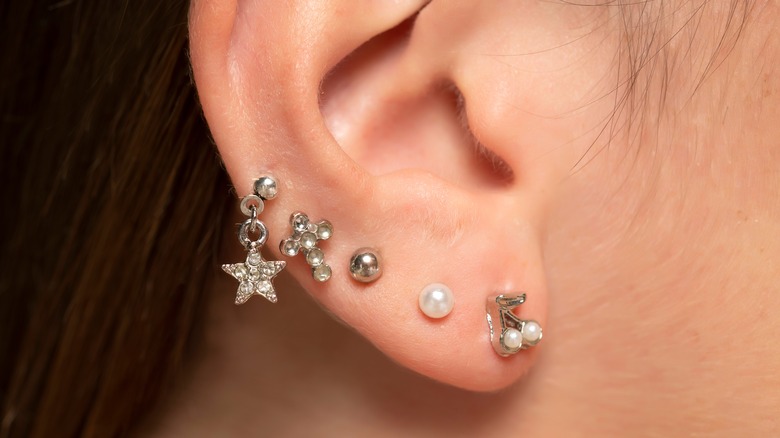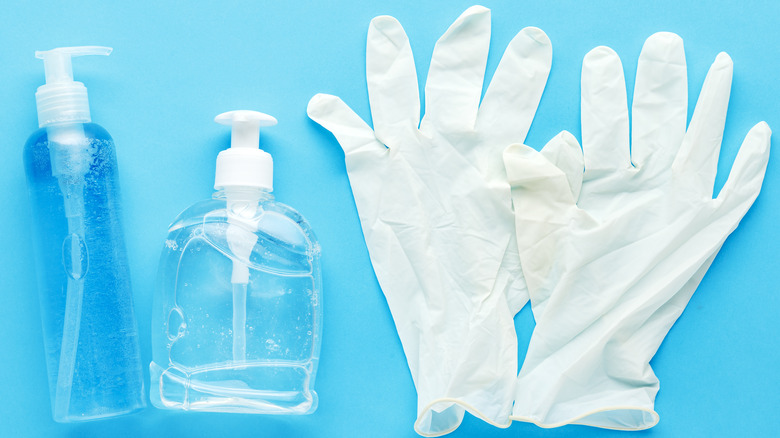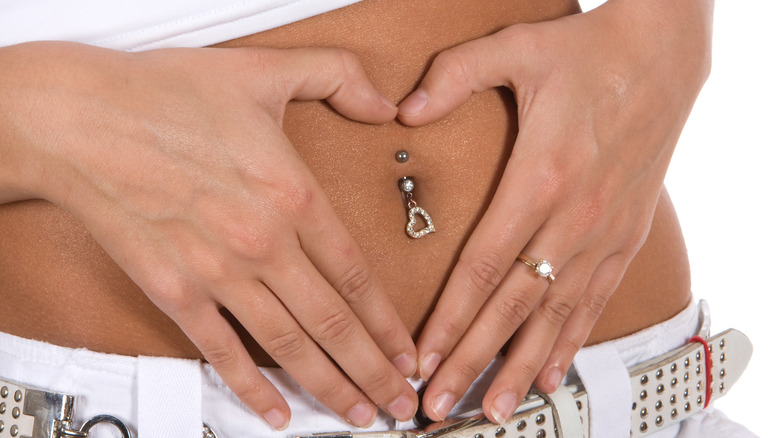Your Guide To Safely Changing Your Piercing Jewelry
Whether you just received your first piercing or you have many, you know how exciting it can be to think about your first jewelry change. More often than not, those who get pierced choose to swap out the jewelry they originally receive with a piece that is more reflective of their personal style. However, it takes time for the piercing to heal before this can be done safely.
The location of where you were pierced, as well as your body's unique healing process, will dictate when you can change your jewelry. If you develop issues, such as an infection, you may have to wait even longer to swap out your jewelry. It's also important to note that changing your jewelry before your piercing is fully healed can set back the entire process, according to Infinite Body. In some cases, it might even require you to remove the jewelry entirely, resulting in the loss of the piercing.
Several factors impact when you can change your piercing jewelry, but once you've fully healed, you can begin shopping for pieces that speak to your personality. Those who've been pierced many times might suggest changing your jewelry at home, while professional piercers may recommend going back to the shop. Regardless of which route you choose, safety will need to be paramount. Here is what you need to know about safely changing your piercing jewelry.
Changing your piercing jewelry safely
Before you can safely change your piercing jewelry, you need to ensure that the site is healed, per Infinite Body. As previously mentioned, this will depend on where the piercing is located, as well as your body's unique healing process. Your piercer will be able to provide you with an accurate timeframe.
Once you're healed, you'll need to know the size of your existing jewelry before you look for a replacement. This will ensure that the piercing itself does not become irritated and that your new jewelry fits seamlessly. If you're unsure of your jewelry's size, a piercing studio can measure it for you.
When you have your new, properly-sized jewelry, it's time to make the swap. Piercings Works recommends beginning by cleaning your jewelry with piercing soap and patting it dry. Then, slip on nitrile gloves to get a better grip on your jewelry. If you're removing a screw-in (threaded) piece of jewelry, Studs says to begin by firmly holding the flatback post tightly in one hand, and then unscrewing the top. To remove a fixed bead ring, hold the earring on one side of the ball while twisting it in the opposite direction to open it. Clickers can be removed by finding the closure point, and then simply clicking the hinged part outward. Once the old earring has been removed, lubricate the new piece with soap and water before locking it in place. Dry jewelry can damage a new, sensitive piercing.
Understanding the piercing healing process
It's important to keep in mind that if you're nervous about changing your jewelry for the first time, a piercing studio can help you through the process. Your piercer can also be a valuable resource when it comes to understanding when you're healed enough to change your jewelry and how to do it safely.
To make sure the healing process goes as smoothly as possible, Pierced has a few tips you can take into account. First, always make sure that your hands are washed and clean before you touch your new piercing. When cleaning the piercing and surrounding skin, use a soap that is free of dyes and fragrances to prevent irritation. Always rinse the area thoroughly and pat it dry once you're finished.
Evolution Piercing notes that you may see white or yellow fluid (not pus) come from your piercing during the healing process. To prevent the buildup of these secretions, you may want to use a sterile wound care saline solution around the area. If you have any questions after you receive your piercing, do not hesitate to reconnect with your piercing studio.


